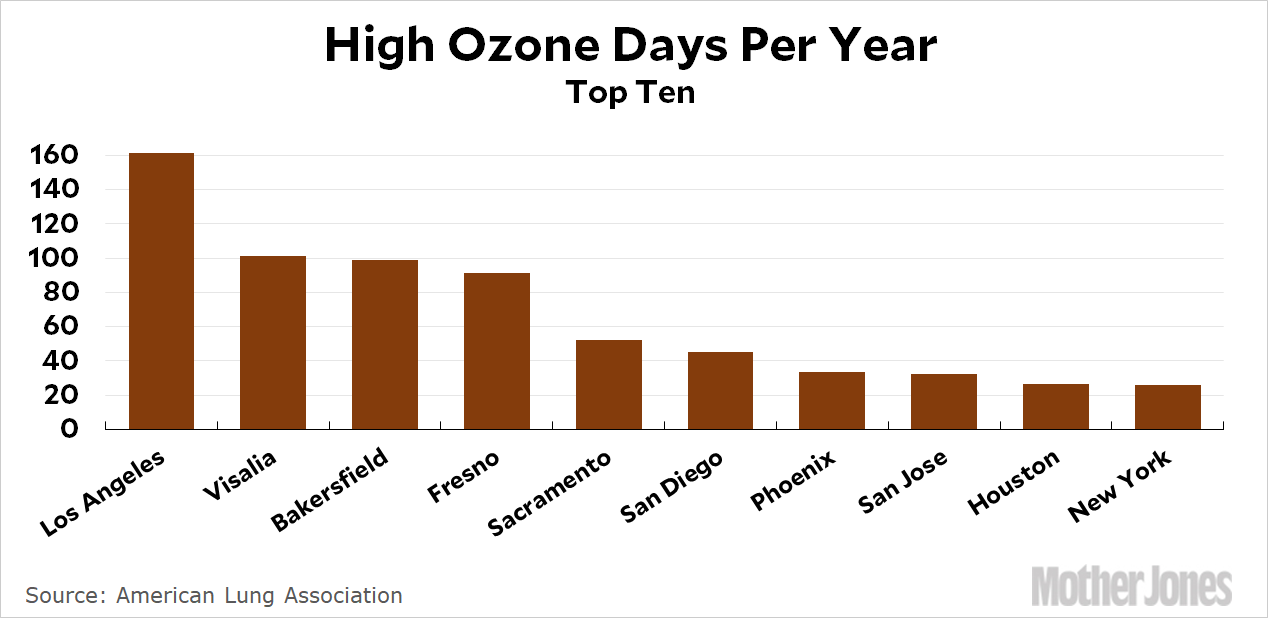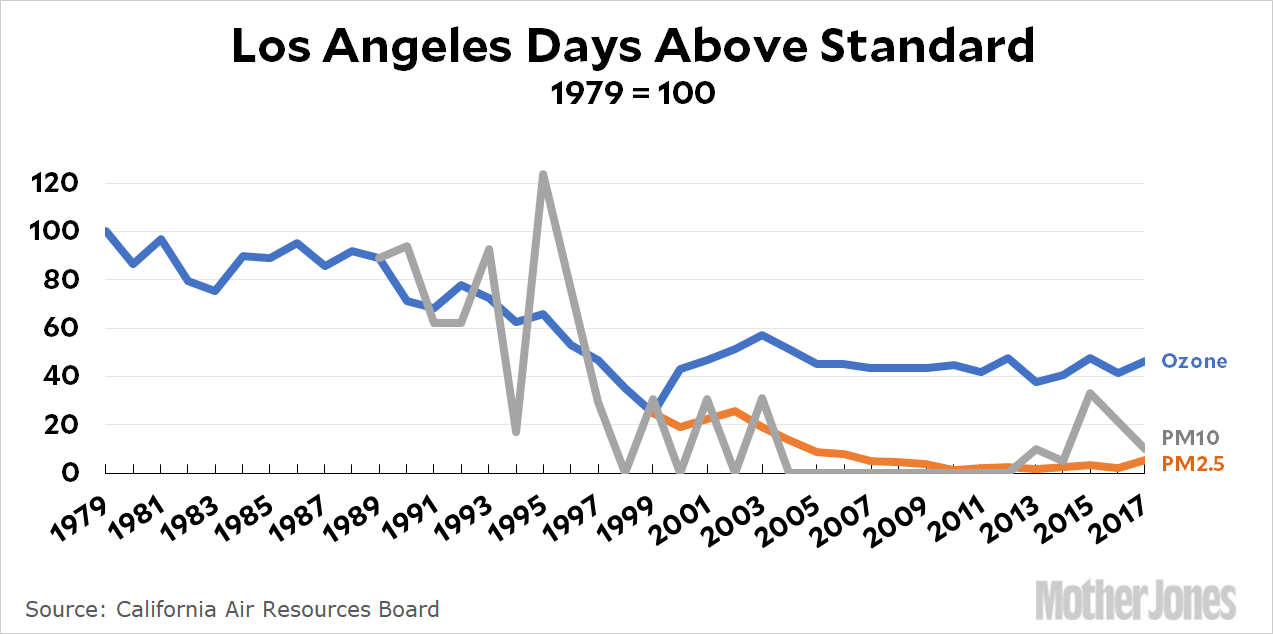Today features the weirdest anti-regulation polemic I’ve ever seen. But first, let’s set the stage:

This comes from the American Lung Association’s annual “State of the Air” report, and as usual, California doesn’t do well. Here is National Review’s Jim Geraghty to tell us why:
California has the toughest air-quality regulations of any state in the country….Yet the State of the Air report finds that by every measure — ozone, year-round particle pollution, and short-term particle pollution — California cities are at the top of the list and often dominate the top ten.
….If California has such strict regulation, why is the air quality so bad? Blame it on geography and population density — two factors that are exceptionally difficult to change. The American Lung Association has done 20 State of the Air reports and Los Angeles ranked as the worst in 19 of those years. California’s cities have a lot of people, a lot of cars and traffic, and a lot of sunny days. When you live in a valley surrounded by high mountains, the smog doesn’t disperse easily.
….The American Lung Association opposes the Trump administration’s effort to repeal the Clean Power Plan, removing limits on methane emissions, efforts to loosen the fuel efficiency standards on cars, and the Trump administration’s stances on the environment in general. But California is a glaring evidence that you can only regulate away air pollution so much….If the toughest air-quality regulations in the country are having such a limited effect on what Californians breathe, proponents of tougher air-quality regulations elsewhere should be modest in their promises.
This is stone cold nuts. It’s true that there are reasons for California’s bad air. That’s why our regulations are so tough. And they’ve made a tremendous difference:

The news is even better in the Central Valley. In Fresno, for example, the number of ozone days above standard has dropped by 80 percent since its high point:

California is, if anything, a reminder of just how effective tough regulations can be. Everybody who’s lived here for the past few decades knows this perfectly well. The air today may still need improvement, but it’s light years better than it was a few decades ago. We are the poster child for just how much you can do for air quality if you’re willing to adopt strict standards and stick to them.













